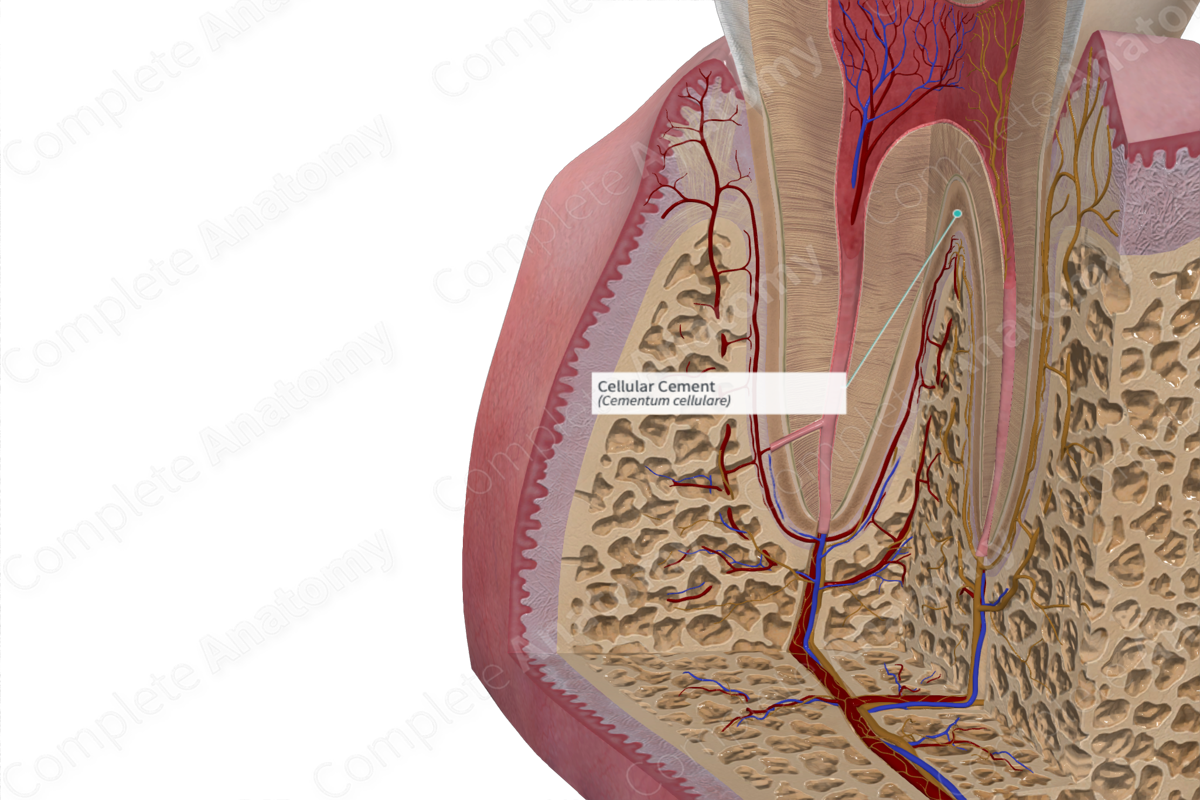
Quick Facts
The cellular cement is the cementum covering the apical half to two thirds of the tooth root; it contains cementocytes embedded in the calcified matrix and is usually opposed by a layer of acellular cementum (Dorland, 2011).
Related parts of the anatomy
Structure and/or Key Feature(s)
Cellular cement is generally composed of cementocytes in lacunae, joined by canaliculi, in calcified cement. Cellular cement is generally thicker than its acellular counterpart (Foster, 2017).
Cellular cement can be further classified depending on the presence of intrinsic and extrinsic fibers. Cellular mixed fiber cement describes cement in which both extrinsic Sharpey’s fibers and surrounding intrinsic matrix fibers are present in the calcified cement. Extrinsic fibers are produced by the fibroblasts present in the periodontal ligament. Cellular intrinsic fiber cement describes cement in which only intrinsic fibers exist, without any inserting extrinsic periodontal ligament fibers. Cellular intrinsic fiber cement is primarily a reparative cement (Vishwakarma et al., 2014).
Anatomical Relations
Cellular cement is described as the portion of cement located in the apical portion of the tooth.
Function
While the overall function of cement is for tooth support and anchorage, the primary function of cellular cement lies in adaptation, whereby it reshapes the root surface during tooth movement or else compensates for crown wear (Yamamoto et al., 2016).
References
Dorland, W. (2011) Dorland's Illustrated Medical Dictionary. 32nd edn. Philadelphia, USA: Elsevier Saunders.
Foster, B. L. (2017) 'On the discovery of cementum', J Periodontal Res, 52(4), pp. 666-685.
Vishwakarma, A., Sharpe, P., Shi, S. and Ramalingam, M. (2014) Stem Cell Biology and Tissue Engineering in Dental Sciences. Elsevier Science.
Yamamoto, T., Hasegawa, T., Hongo, H. and Amizuka, N. (2016) 'Histology of human cementum: Its structure, function, and development', Jpn Dent Sci Rev, 52(3), pp. 63-74.
